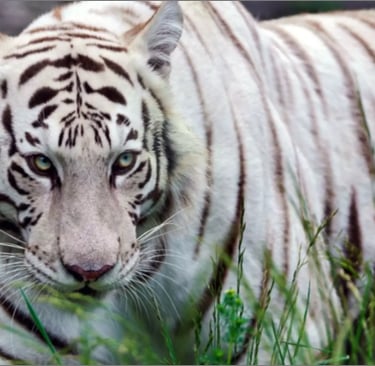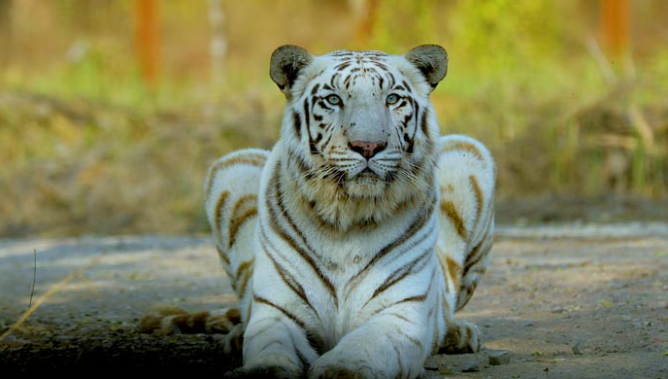Do You Know the Story of Mohan—the White Tiger
#MohanTiger, #WhiteTigerLegacy, #RewaWhiteTiger, #MaharajaMartandSingh, #WildlifeConservation, #GeneticImpact, #WhiteBengalTiger, #RewaZoo, #TigerHeritage, #IndiaWildlifeHistory, #White Tiger
KNOWLEDGE & EDUCATION
8/1/20252 min read




The story of Mohan is more than just folklore—it’s a chapter in conservation history. Mohan, the first white Bengal tiger discovered and bred by royalty in India, became the progenitor of nearly all captive white tigers worldwide. His legacy remains both fascinating and controversial. Let’s delve into the life and impact of this rare feline.
1. How Mohan Was Discovered
In 1951, Maharaja Martand Singh of Rewa discovered Mohan, a pure white tiger cub, in the Sanjay–Dubri wildlife landscape in Sidhi district, Madhya Pradesh. He became famous for his striking pale fur and blue eyes—traits extremely rare in wild Bengal tigers.
2. Unique Sundays: Mohan’s Famous Fasting Habit
Legend has it that Mohan, unlike other Bengal tigers, refused meat on Sundays—he was given only milk and didn’t eat his usual fare. Even his caretakers couldn’t figure out why.
3. Mohan’s Legacy Through Inbreeding
Mohan was primarily paired with three tigresses—Begum, Radha, and later Sukeshi—but only mating with his daughter Radha produced white cubs. These included Raja, Rani, Mohini, and Sukeshi. Eventually, Mohan fathered 34 cubs, with 21 being white—the genetic blueprint for captive white tigers worldwide.
4. The Controversy of Inbreeding
While breeding Mohan ensured the survival of the white tiger lineage, it sparked issues around genetic health. Inbreeding led to a loss of genetic diversity and many health complications—including stillbirths, anemia, and high cub mortality.
5. Mohan’s Final Years and Death
Mohan lived for 19 years, passing away on December 19, 1969, likely due to genetic complications. He was given a state funeral at Rewa’s Govindgarh Fort, deeply mourned by Maharaja Martand Singh and locals alike.
6. Virat: The Last of His Line
Mohan’s famous descendant Virat was his last known white tiger cub in captivity. After Virat's death in 1976, Rewa’s white tiger lineage came to an end until revived decades later.
7. Revival Through the White Tiger Safari Project
In 2016, the Maharaja Martand Singh Zoo in Mukundpur launched a White Tiger Safari to reintroduce white tigers to Rewa. These animals trace their ancestry back to Mohan himself—symbolically bringing his legacy home.
8. Mohan’s Global Impact on Conservation
Almost all captive white tigers in zoos today globally descend from Mohan’s genetic line. While their beauty captured public attention, the focus on appearance often overshadowed conservation ethics.
Conclusion
Mohan’s story is a blend of wonder and warning: a rare animal that captured hearts and sparked a global fascination—but at a cost. While he inspired generations with his beauty, the consequences of inbreeding and genetic manipulation highlighted ethical complexities in conservation. Mohan remains a living legend, urging us to learn lessons from nature responsibly.
Knowledge
Empowering minds with reliable educational content daily.
Newsletter Signup
© 2025 DoYouKnow. All rights reserved.
Stay Ahead of the Trends – Join Our Newsletter
